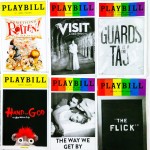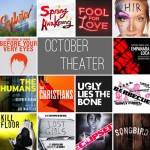If you’ve followed this site for any period of time, you already know that I see a plethora of theater (about two shows a week). Given that I document so much of my life here it feels appropriate to recap my theater-going experiences too. Here’s the rundown of shows I saw last month.
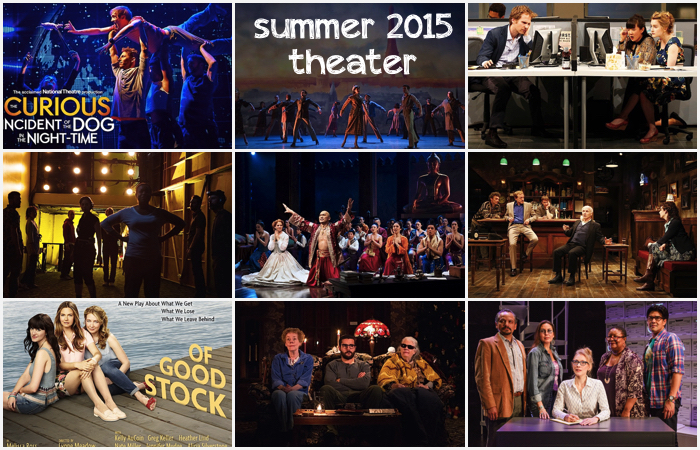
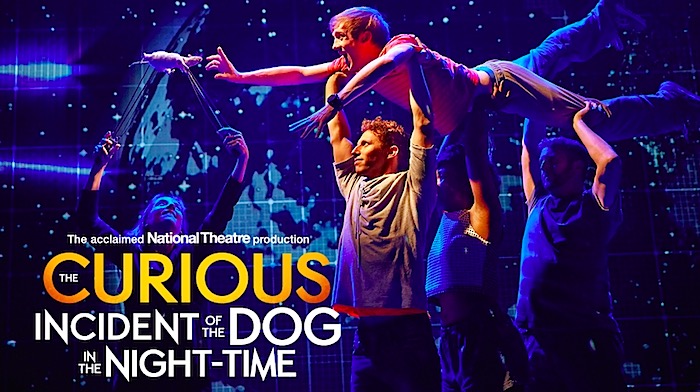
Curious Incident of the Dog in the Night-Time by Simon Stephens (Broadway)
It was an easy decision to buy a ticket to this show mere days before the Tony Awards, given its high odds of winning Best Play… which, sure enough, it did. The play is based upon Mark Haddon’s 2004 book of the same name — it’s told through the perspective of an autistic 15-year-old narrator named Christopher Boone who, in the opening moments of the play, has just encountered his neighbor’s freshly killed dog. His ensuing investigation of the crime uncovers painful family secrets. The play very closely follows its literary antecedent, right down to staging the illustrations and mathematical equations that the author uses to show how Christopher’s mind works in the book. The play’s director, two-time Tony Award winner Marianne Elliott, brings a dexterous ingenuity to the staging — she marries seamless movement choreography (see above image) with a highly technical, dazzling digital stage that puts the audience inside Christopher’s head just as effectively as Haddon does in the novel. I can’t overstate how well this is done. In fact, I’d go as far as to say that this is a superb production of merely a good play — if you take away the staging elements, the play itself is very bare bones. This theater-going experience comes alive with Elliot’s visionary leadership, and it’s even more impressive when you consider that she first staged this show many years ago in the round (at the National Theatre in the UK), so this Broadway staging is entirely revised for a proscenium space. I saw a filmed version of that UK production years ago and I was very unsure as to how it would play outside of the round, but it’s nothing short of brilliant.
FYI — my seat was in the last row of the mezzanine (there’s no balcony at the Barrymore so it was actually the last row of the entire theater), and I could see everything beautifully. In fact, I’d recommend a mezz seat to better appreciate the digital artistry that illuminates the stage floor, as I imagine it’s difficult to see all of it from orchestra seats. It was only $35 (including fees) purchased on-line in advance, though it’s likely prices have gone up a bit since its well-deserved Tony win.
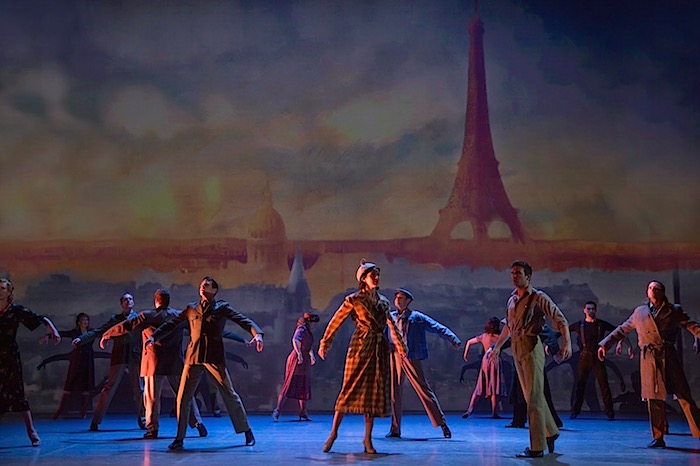
American in Paris book by Craig Lucas, music & lyrics by the Gershwins (Broadway)
American in Paris tied Fun Home for the most number of Tony nominations this year (12 apiece), so even though I had zero interest in a largely dance-based musical with a new book written for classic Gershwin tunes, I bought a $60 ticket anyway (cheapest I could get pre-Tonys). I knew it was a gamble given my inherent lack of interest in dance, but in the event it won Best Musical I knew I had to see it. Well.. perhaps I should’ve listened to my instincts and skipped this one. For the record, there are many things to love about this production — you could even say S’Wonderful, to quote one of the numbers — but it’s not my cup of tea. Though I would have enjoyed it more if everyone around me had behaved better… I was in the second row of the balcony and two women in front of me talked the whole time (they appeared to be non-English speakers and I think one was translating it for the other; they were trying to be quiet but it was so distracting). And their heads leaned forward far enough that, given the steep rake of the balcony at the Palace Theatre, about 50% of my view of the stage was blocked at any given moment. A woman to the left of them was looking at her phone for the first 5 minutes, despite the fact that an usher repeatedly shined a flashlight on her; I have no idea what happened at the beginning of the show because it was that distracting. Another usher was super rude to me when I made a wrong turn going towards the bathroom. The two Tony-nominated leads were both out at the performance I saw, though only one of those replacements was properly communicated (via a Playbill insert and on a board in the lobby for Leanne Cope’s stand-by, with zero mention of the fact that Robert Fairchild was also out, which I think is in violation of Actors’ Equity). Basically, enough peripheral things went wrong surrounding the experience that it reflected poorly on the show itself, even if that’s not entirely fair. I did my best to focus on what was happening on-stage, despite the fact that I couldn’t see much of it beyond the heads of the women in front of me, but it was hard to find any of it compelling. Perhaps it deserves another chance given the circumstances but time and money are limited and there are other shows I’d rather give a shot. It was eye-opening in terms of how elements outside the actual production of the show can influence someone’s theater-going experience — if this was the ONE show I saw a year, or the first time I was taking a chance on Broadway, I’m not sure I’d go back. Jordan Roth, president of Jujamcyn Theaters which owns several Broadway houses, recently gave a great interview in which he talks about hospitality in his theaters — how he wants to provide a curb-to-curb experience for theater-goers instead of a curtain-to-curtain experience. Those words floated around my head throughout my time at the Palace (owned not by Jujamcyn, but by the Nederlander Organization). Food for thought.
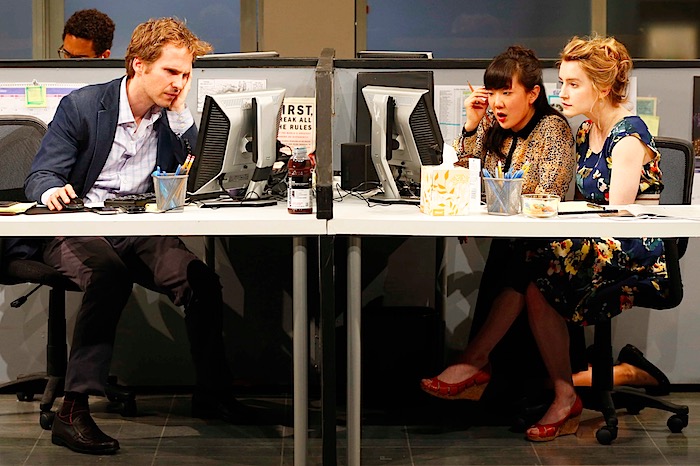
Gloria by Branden Jacobs-Jenkins (off-Broadway)
I’m very much taken with off-Broadway plays lately, finding them more engaging, stimulating, and thought-provoking than their Main Stem counterparts. One prime example of this is Gloria, a new play by Branden Jacobs-Jenkins that recently completed its run at the Vineyard Theatre. It begins as a workplace drama but then, for reasons I cannot reveal due to major spoilers, it spins into something darker and deeper. (Hint to playwrights: if you can pull off a major twist within a compelling play, odds are I will see it. Because reviewers won’t give away more than the basic premise but they’ll say it’s worth it, and then I immediately buy a ticket. So do that if you want my money.) In this case, the big twist comes just before intermission and leaves the audience stunned into silence. I had no idea what would happen in Act II, and I delighted in watching something completely unexpected unfold. The six actors are outstanding. The sets are noteworthy. I suspect that Gloria will have life beyond its Vineyard run, and it’s very much worth seeking out if it plays regionally in your neck of the woods. While I am only familiar with Jacobs-Jenkin’s An Octoroon by its acclaim, I am very glad to be introduced to this playwright and look forward to his future work.
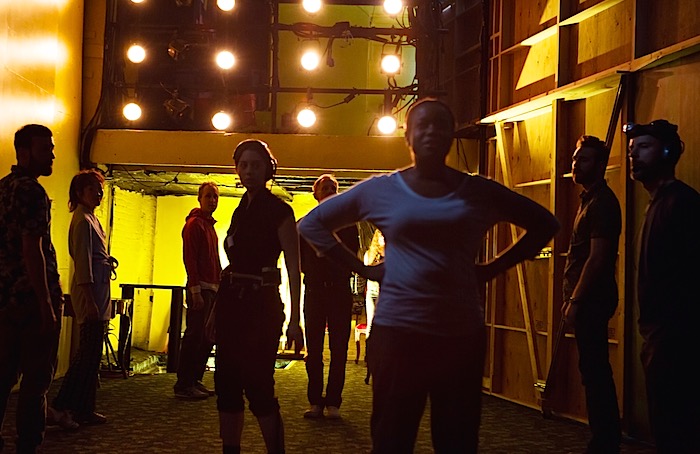
10 out of 12 by Anne Washburn (off-Broadway)
This show is quite an undertaking — it’s set during tech of a play, which is the multi-day process during which aspects like lighting and audio cues are ironed out as the actors stand on their marks and say their lines repeatedly until glitches are fixed. Tech is widely considered a painstaking chore for actors and theater technicians alike. While going through the tech process on her previous shows, playwright Anne Washburn took notes and found it a ripe enough backdrop for her new play (’10 out of 12′ refers to an Equity term for the number of workable hours within a 12-hour day). Upon entering the theater (my first show at SoHo Rep!) an usher presented me with an earpiece to be worn throughout the show. As the show begins we hear a stage manager of the play-within-the-play calling cues and offering side comments, timed out perfectly with the action on-stage. In fact, the action happens all around us, as the director and actors and technicians move about the entire theater as though the audience is not present — it feels borderline immersive to watch them blur that line between stage and audience. To a certain extent this show is “insider-y,” which is to say it speaks to those involved in theater a fair amount, but it’s enjoyable by all. Personally it resonated with me based on my experience working in television — many times I would subtly nod my head in recognition, “Oh yeah, I’ve seen an actor pull that move before… yup, that’s happened too.” But I find that when you get that deep into minutiae with any field, even if it’s a topic you don’t have much knowledge of, there is a certain fascination with observing something so closely. Such is the case with 10 out of 12. This show feels somewhat experimental, especially with the earpiece; I was really impressed with the overlapping dialogue. The ending didn’t work for me, it felt off. But I so enjoyed being a part of the process that I left fully satisfied with the experience. I’m not sure how widely this production will be replicated since it’s so tech-heavy — in addition to the added cost of the earpieces, the play-within-the-play includes rather cumbersome elements. It’s certainly do-able, just not budget-friendly.
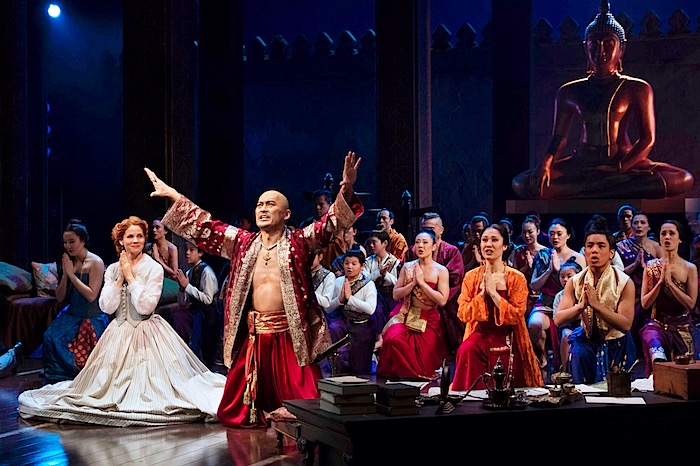
The King and I by Rodgers & Hammerstein (Broadway)
This musical is so glorious that I was moved to tears on a few occasions. It was my first time experiencing The King and I — I haven’t even seen the movie — and WHAT an introduction. Bartlett Sher’s sumptuous staging fully utilizes the expansive Vivian Beaumont Theater at Lincoln Center, which is perhaps my favorite house on Broadway. And I was so grateful for my $32 front-row LincTix (available for people under 35). In terms of my theater-going experience, this was exactly the opposite of what happened at American in Paris — I loved every minute from when I first stepped into the space to when I departed. And guess what? Tony winning star Kelli O’Hara was on vacation the week I saw the show, and it was STILL fabulous — that says a lot about how solid this production is. (Interesting side note: Kelli’s standby is an actress names Betsy Morgan who was a senior at Emerson when I was a freshman; I remember seeing her in a handful of shows back in 2003.) Going into the show I barely knew its most famous songs — “Getting to Know You” and “Shall We Dance” — and based on the plot premise (an English schoolteacher arrives in Siam to educate the King’s many children in the mid-1800s) I wasn’t sure I’d take to it. But I couldn’t have been more wrong; I became invested in this world as soon as Anna and her young son arrive on a giant ship in the opening scene. By the closing number, I was weeping for the beauty of it all — that I get to sit in a beautiful theater on a hot July afternoon and watch some of the best stage artists in the county present a fully realized, perfect incarnation of a classic show. It made me feel lucky to be alive. Theater, folks! It’s a powerful thing.
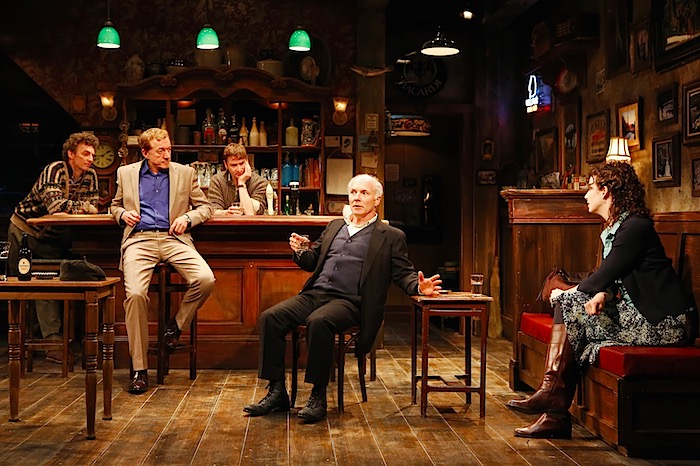
The Weir by Conor McPherson (off-Broadway)
I first heard about this play in my 9th grade Theatre Arts class — it was running on Broadway at the time (1999) and the premise intrigued me. It takes place in a rural Irish pub as four local men welcome a woman from Dublin who has just arrived to rent an old house in the area. Over many drinks, they take turns telling ghost stories rumored to have happened in town. The Irish Rep Theatre has revived this Conor McPherson play a few times over the years and I was glad to finally catch one of its runs. Unfortunately, I thought it took too long to rev up and gain momentum, and the ghost stories didn’t quite pack the punch I anticipated. Perhaps I’d built it up too much in my head after all these years? While it left me underwhelmed, I am glad to have finally encountered it.
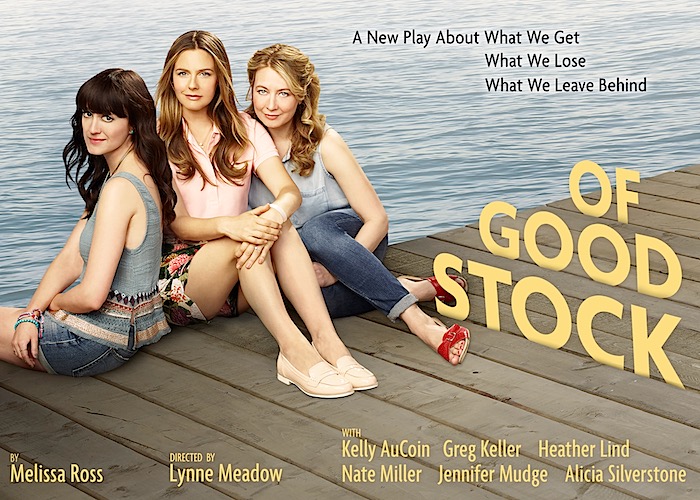
Of Good Stock by Melissa Ross (off-Broadway)
Here’s the elevator pitch: three sisters reunite at their family home in Cape Cod many years after the death of their parents. Each of the sisters now has a significant other, and over the course of a day-and-a-half they dig up pain from the past and process how it affects their futures. There are secrets, squabbles, and scotch. Are you sold? I knew I was on board after falling hard for Melissa Ross’s last play, Nice Girl at Labyrinth Theater Company. Of Good Stock had its world premiere at South Coast Rep in California earlier this spring (with a different cast and director) but I was particularly excited to see Lynne Meadow’s production at MTC — the cast included the outstanding Jennifer Mudge, Alicia Silverstone, and Heather Lind as the three sisters (their male counterparts were just as strong in the significant other roles). There are a bunch of plot points that keep things moving forward but I most enjoyed the quieter moments as characters prepared food or washed dishes, alternately building bonds and then breaking them with each meal. It’s a roller coaster ride and the sisters are perhaps more shrill than one would like, but each one is fleshed out beautifully and a final breakthrough late in the show is especially poignant. This show closed last weekend but I hope the play finds its way to a theater near you.
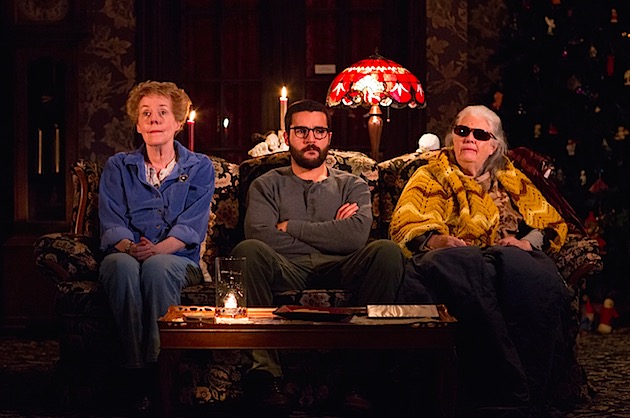
John by Annie Baker (off-Broadway)
Oh Annie Baker, how I love thee. She is the Pulitzer prize winning playwright of The Flick, which I saw last month at Barrow Street Theater and thoroughly enjoyed. Her new endeavor, John, just began performances at the Signature Theatre uptown and I was delighted to catch an early preview (in a front row seat — all tickets are $25). Annie Baker works again with director Sam Gold, a long-time collaboration that has proved quite fruitful. Indeed, John feels similar to The Flick in all the right ways, and I was delighted to draw comparisons between the two while still wholly appreciating John as its own piece. Annie Baker is a keen observer of natural moments — she pens long scenes in which characters get to exist in a space with each other while big and tiny things happen; the audience follows along as though a fly on the wall. In the case of The Flick we observe employees at an independent Massachusetts movie theater, and in the case of John we observe the goings on at a Gettysburg bed and breakfast just after Thanksgiving. The gist is that a couple arrives at the B&B to stay for a few nights. They are going through a rough patch. We see them interact with the owner and her blind friend who drops by for visits. And… that’s it. That’s what happens. The plot is absolutely secondary to character development and the joy of observing these people exist and interact. John is 3 hours and 15 minutes long with two intermissions. It’s staged on one of the most complete sets I’ve seen of any play, ever. It places the audience so firmly in this environment of a kitschy B&B — it’s warm and cozy, and the decor walks the line between ornate and hideous. I felt so wrapped up in the embrace of this theater experience that I never wanted to leave.
EDITED TO ADD:
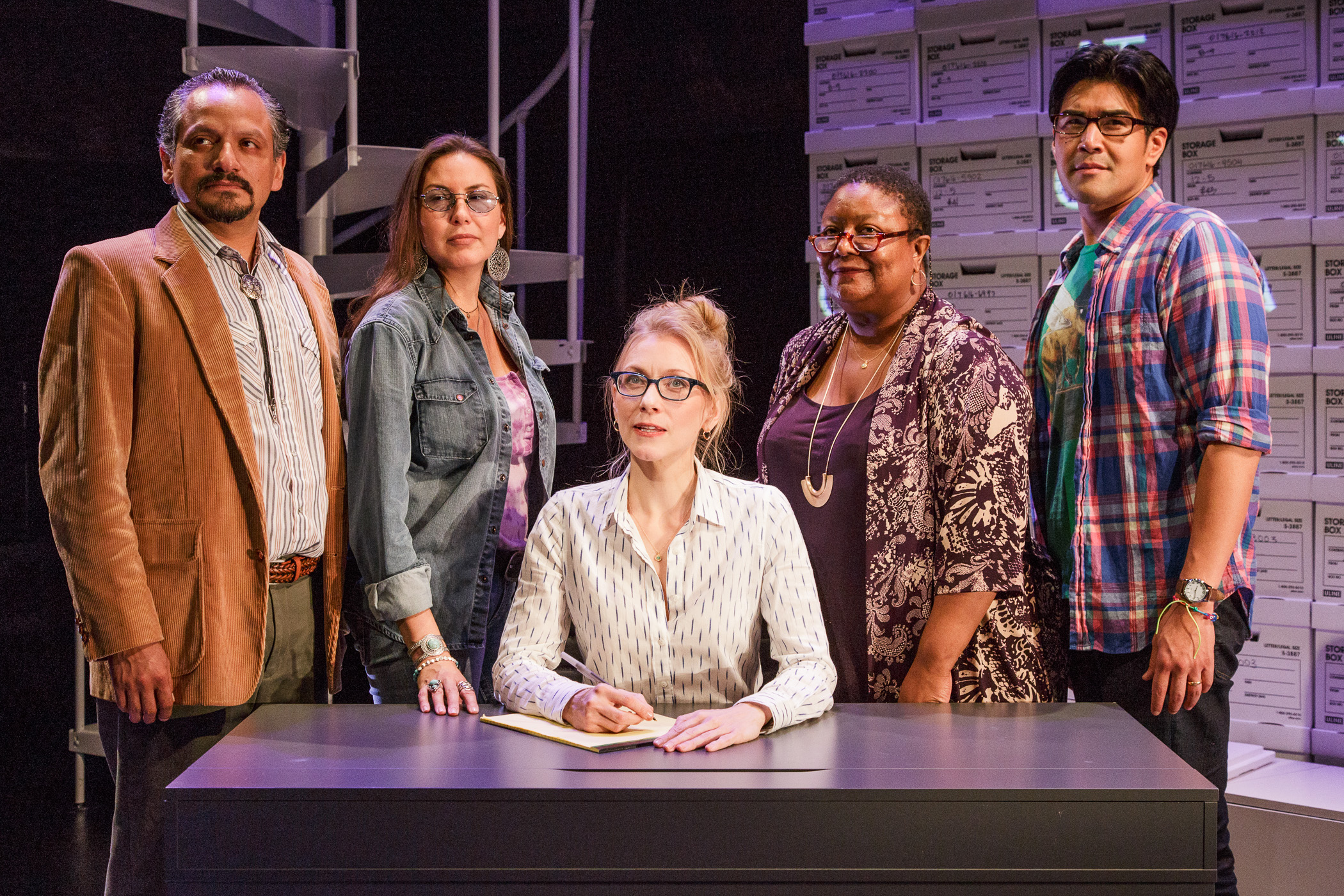
Informed Consent by Deborah Zoe Laufer (off-Broadway)
In August I saw one more show I’d like to add to this post — a new play called Informed Consent which was written as part of an arts science grant. It follows the real-life events of a white professor at Arizona State University who took blood samples from members of the Havasupai tribe with the intent of studying their genes to find an explanation for the high rate of diabetes in their community. But the professor did more than just that, and found evidence that the tribe’s ancestors date back to Africa. This could not have been more disruptive for the Havasupai people who so strongly believe their origin story, that they were sprung from the Grand Canyon itself. While sitting in the audience, I couldn’t help but flashback to my own visit to the Havasupai village earlier this year.
For those of you still reading — which of these shows appeals to you the most? Even if it’s different than something you’d normally see, do these descriptions entice you to check out a show? Part of why I write these recaps is because seeing new theater feels like a discovery and I’m eager to share that with others. Have you seen anything lately that you’d recommend to me?


